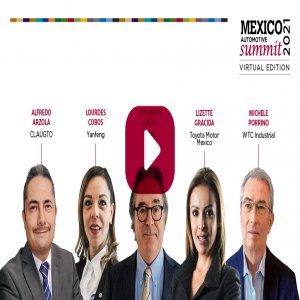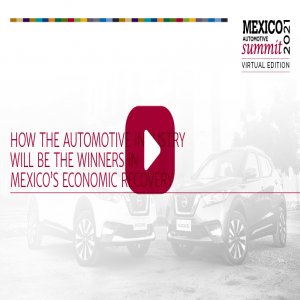
Investment and Supply Chain Development
The advantages Mexico offers to the automotive sector, alongside sociopolitical concerns and areas to develop, were discussed during the panel “Investment and Supply Chain Development” at Mexico Automotive Summit 2016. Andrés Lerch, Partner, Advisory Services and Leader of the Operations Transformation Area of Ernst & Young Mexico, was quick to reassure the audience. “There is no doubt the Mexican automotive sector will keep growing,” he said.
Mexico has bet on the development of local manufacturing. “Twenty years ago Mexico developed an open economic strategy to foreign markets,” Alejandro Díaz de León, Director General of Bancomext said. NAFTA brought manufacturing to the country from the US and the 2008 crisis helped accelerate the sector, said De Icaza. “Now, all labor intensive manufacturing is done in Mexico.”
“Mexico is the Latin American country with the most economic stability over time,” added Diego Spannaus, Head of International Subsidiary Banking and Commercial Banking of HSBC México. “This makes it a good investment destination.” He said that many players, including HSBC, expect Mexico will be among the largest world economies by 2050.
Among the many advantages the country can offer the automotive sector are a young population and an ideal location. But this young population needs appropriate training to support the automotive industry, said Luis Abelleyra, Special Projects Director of Grupo DINA.
There are many initiatives to train future professionals. Grupo DINA, for instance, is collaborating with IPN, research centers and other technology partners, including Cummins, to push forward their training. Highly qualified Mexican engineers can be the backbone of the automotive industry. Local engineers trained by Region ZF TRW Active & Passive Safety Technology have designed all local assembly lines for the company and are even exporting them to Czech Republic and China, said Alberto De Icaza, Director Mexico of the company.
Mexico also offers highly competitive manufacturing costs, especially in comparison to the US. “Making a small car in the US is not cost effective, which is why Ford is moving its manufacturing to Mexico,” said De Icaza.
Road transportation also has aided the automotive industry through increased mobility, said Abelleyra. These measures will continue to pay off. “In 2020, Mexico will manufacture 5 million cars,” he said. The Energy Reform, meanwhile, will provide lower prices for electricity, helping the country to become more competitive, added Díaz.
The development of Tier 1, 2 and 3 suppliers, however, is still needed across the country. Mexico has FTAs with the most important economic regions in the world. Yet, the country needs local suppliers to remain cost competitive. As Abelleyra said, it is necessary to look for strategies that permit timely production while benefitting both manufacturers and suppliers. “Working together we can weather bad economic periods,” he said.
There are outside concerns, as well. Political parties in countries such the UK and the US are prioritizing a local agenda over the international bigger picture, Díaz said. “At the end of the day, no one will fight against their own interests,” he said. “But no matter what, Mexico will remain a fundamental ally to the US.”
















